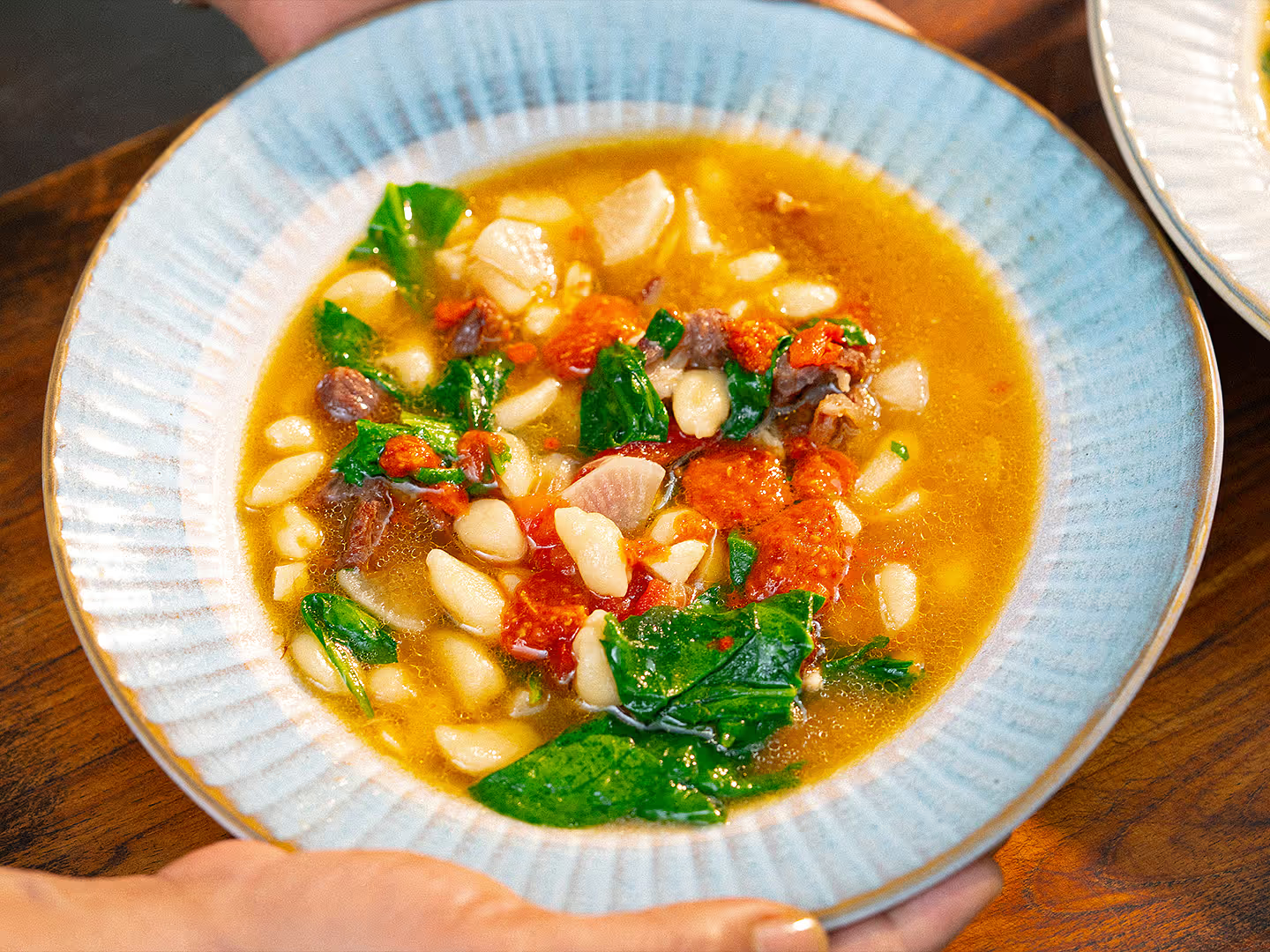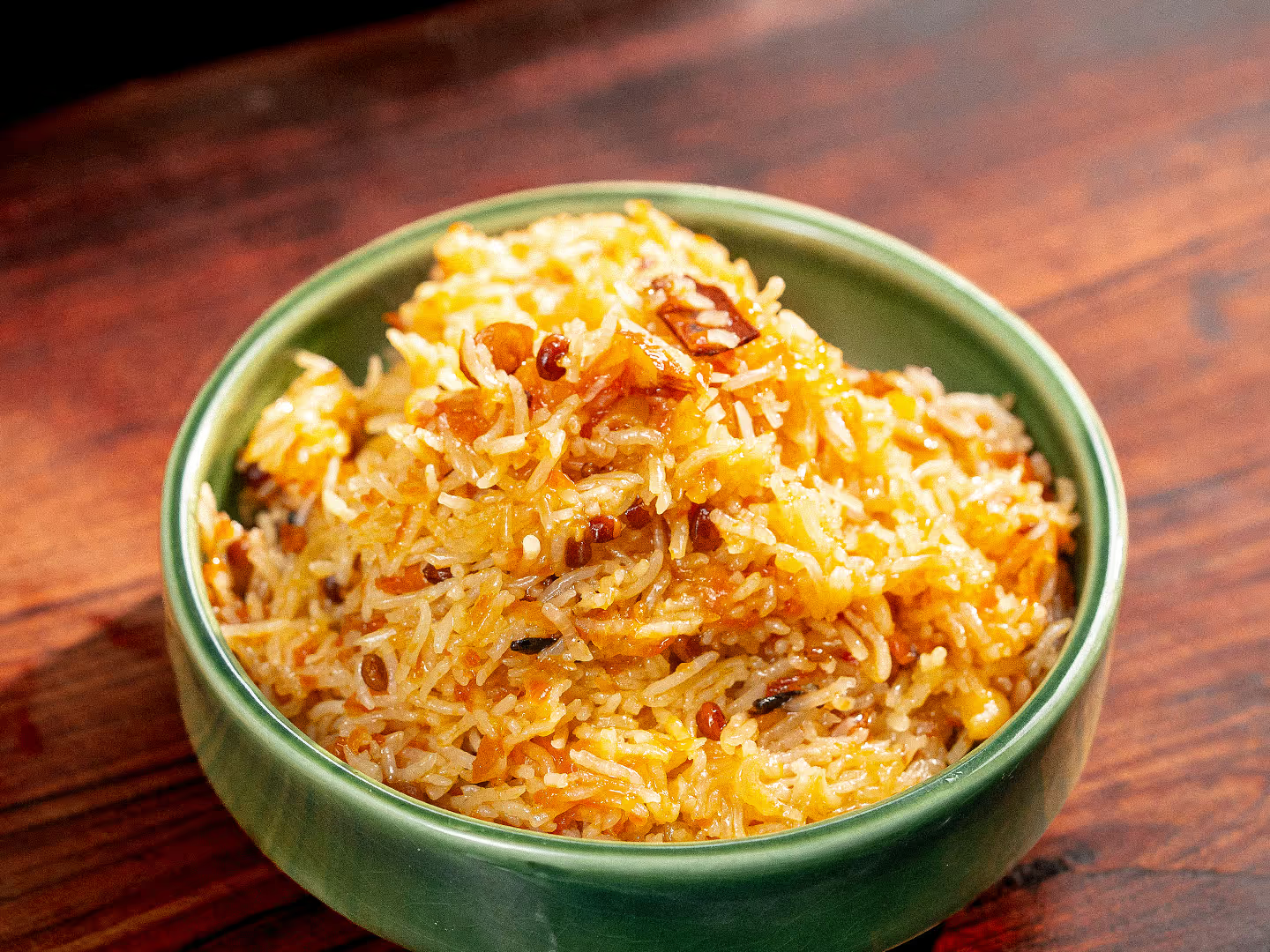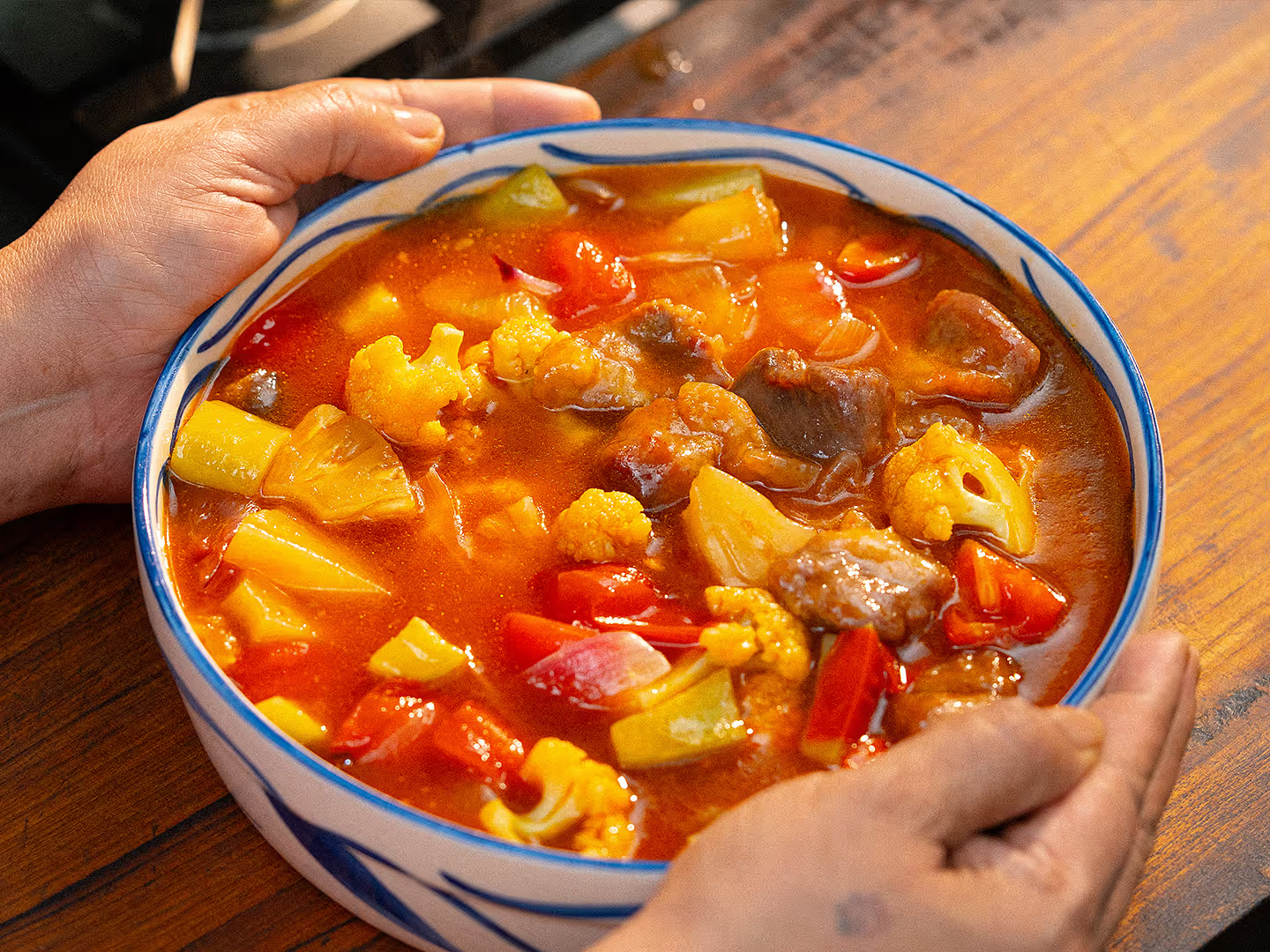Roti
Roti—the magical stovetop Indian flatbread that puffs up like a baloon with no yeast, baking powder or soda.
- Cooking time45 minutes
- Calories68kcal
Rooti, or roti, is a relatively new entrant to the Bengali kitchen. Wheat being a staple in the Northern parts of India, rotis, chapatis, and phulkas are the mainstay. In Bengal however, because the main crop is paddy, the staple has always been rice. It is only in the last 50 years that Bengalis have started eating rotis. Rotis are more popular as breakfast or dinner. For breakfast, rooti is served mashed with milk and a fruit such as banana (doodh-ruti-kola), or with a torkari. For dinner, ruti is usually served with a protein such as egg or chicken curry, or with a thick dal. Another reason for the popularity of rotis in Bengal is its convenience as tiffin or lunchbox item for school or office. Ruti-torkari is less prone to leakage and fewer items are required to eat roti than rice (at least for Bengalis).
We use boiling hot water instead of warm or room temperature water to produce soft rotis that stay soft even when they get cold. There are three reasons why this works. Atta is made with hard wheat which has high protein content. First, the boiling water denatures the wheat proteins, reducing the gluten. This makes the rootis soft not chewy or hard to tear. Second, the hot water partially cooks the flour allowing the starch to absorb more water. The more water the flour absorbs, the greater is the steam generated during cooking, and higher the likelihood of your rootis puffing up like balloons. Third, using boiling water reduces the time you need to knead 😅the flour to form a smooth dough. Because it reduces gluten, it also reduces the resting time between kneading the dough and rolling out the rootis.
Frequently Asked Questions
Books in this recipe
Ingredients
- 200 g Atta [20 g per rooti]
- 150 g Boiling water [75% of flour weight]
- 4 g salt [2% of flour weight]
NOTE: We have revised the weight of water from 185–190 g [92.5% hydration] shown in the video to 150 g [75% hydration] for Indian whole wheat flour (atta). Start with 75% and then add more water if you atta can take it. When we made the video back in San Francisco, the flour—Indian brand atta such as Ashirvaad and Sujata—absorbed more water compared to the branded atta we get now in Calcutta. The higher the bran and protein content in flour, the more water it can absorb. But we did not expect such a large variance even in the atta from the same brand.
Method
- Set some water to boil. We prefer using an electric kettle for this as it is quick and energy efficient compared to boiling it on a gas stove.
- In a mixing bowl add 200 grams of atta (Indian style whole wheat flour), 4 grams of salt (2% of flour weight).
- Next, add 150 grams of boiling hot water (75% of flour weight) to the flour.
- Since the water is very hot, stir the flour and water initially with a spoon.
- Ready a bowl of room temperature water next to your mixing bowl.
- When the atta is cool enough to touch start kneading with your hand. Knead the dough with your knuckles stretching it out and folding it onto itself. This is a soft dough. To incorporate more water, intermittently dip your hand in the bowl of room temperature water and knead again. Knead until the dough is smooth and crack free—about 3–5 minutes if you knead without a break. Set a timer instead of guessing. We find that helpful.
- Cover with a fitting bowl and rest for ten minutes.
- After the rest, divide the dough into balls about 35 grams each. (we have reduced this from what is shown in the video because the weight of water has reduced)
- Roll between the palms of your hands into smooth disks. The rounder and smoother they are now, the easier it will be roll into round rootis later. Keep them covered to prevent drying.
- Time to roll. Keep a bowl full of flour (atta or maida) ready near your rolling surface for dusting from time to time.
- Dip a ball of dough into the flour, place it on the rolling surface, and press to flatten it. Roll with short strokes and keep rotating the disk—this is the key to a round rooti. Practiced rooti makers can simultaneously roll and rotate the dough with the movement of their wrist. Beginners, however, have to stop and rotate manually. From time to time sprinkle a little extra flour to avoid pinching or sticking of the dough. The disk should slide easily on the rolling surface. Roll along one side, not the centre. Once the rooti is about 16–18 centimetres in diameter, dust off the excess flour and set it aside.
- While you are rolling the rooti, set a heavy iron tawa or skillet to heat on the stove. A thick tawa retains more heat and cooks the outer surface of the rooti quickly. So that the insides can remain soft and puff up. If you have an infrared thermometer, the surface of the tawa should be about 250ºC.
- Once the tawa is very hot place the rooti on it. Wait until the wet spot recedes to the centre. This should take about 40 seconds. When you see small bubbles appear turn it over. Cook the other side for 5 seconds. Turn on another burner and place the rooti on full flame. If everything goes right, it will puff up completely. Once it puffs up turn it over and let the other side develop a few spots—should only take a few seconds.
- Maintaining the heat levels is key here. If the pan is not hot enough, the rooti will become crisp like a papad. If it is too hot it will develop burnt spots in some place but will remain wet in others and will stick to the pan. Once in a while, a rooti will just not puff up even though you seem to be doing everything right. Don't sweat it—the rooti will still be soft. Just keep trying to get better.































